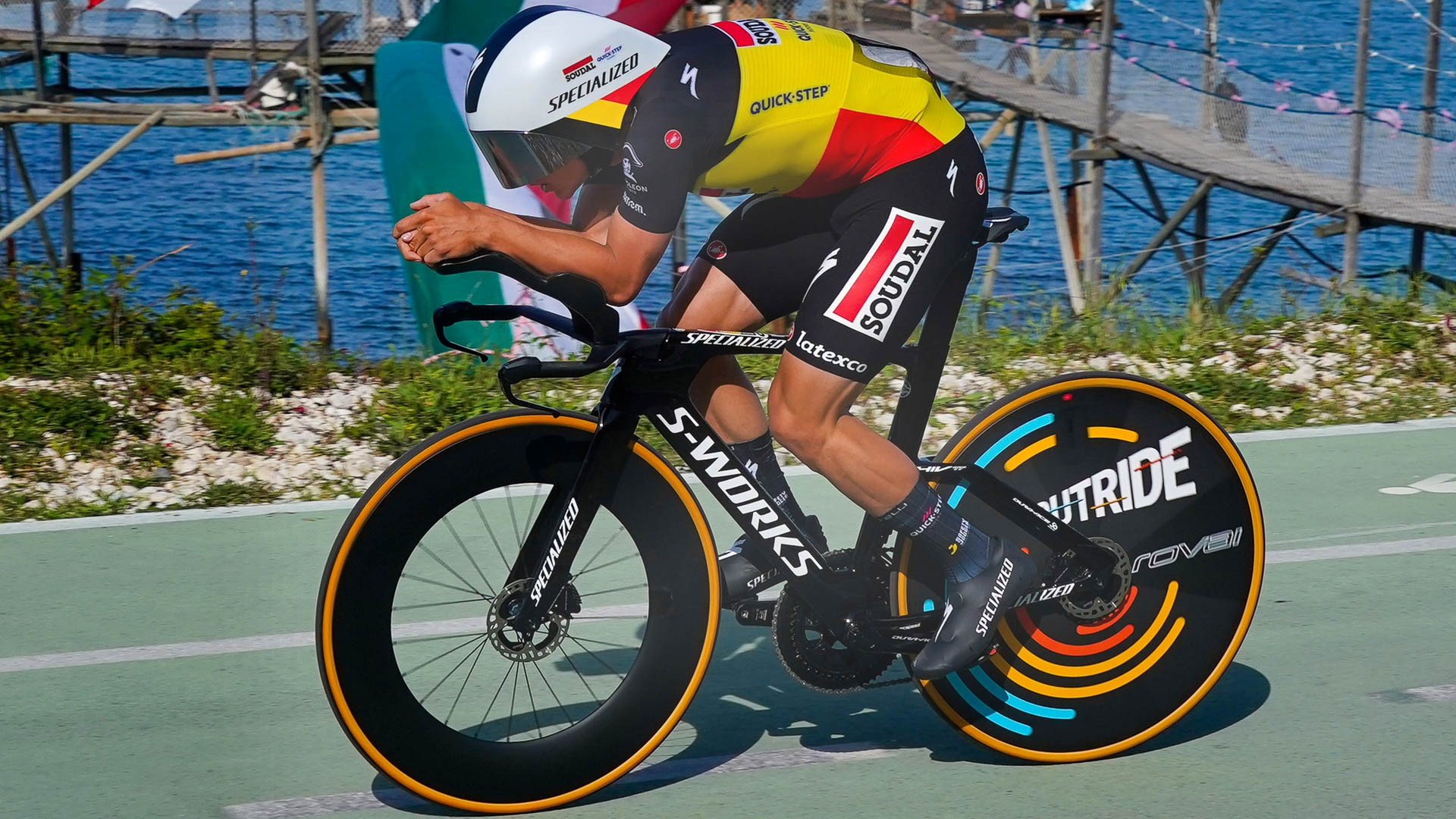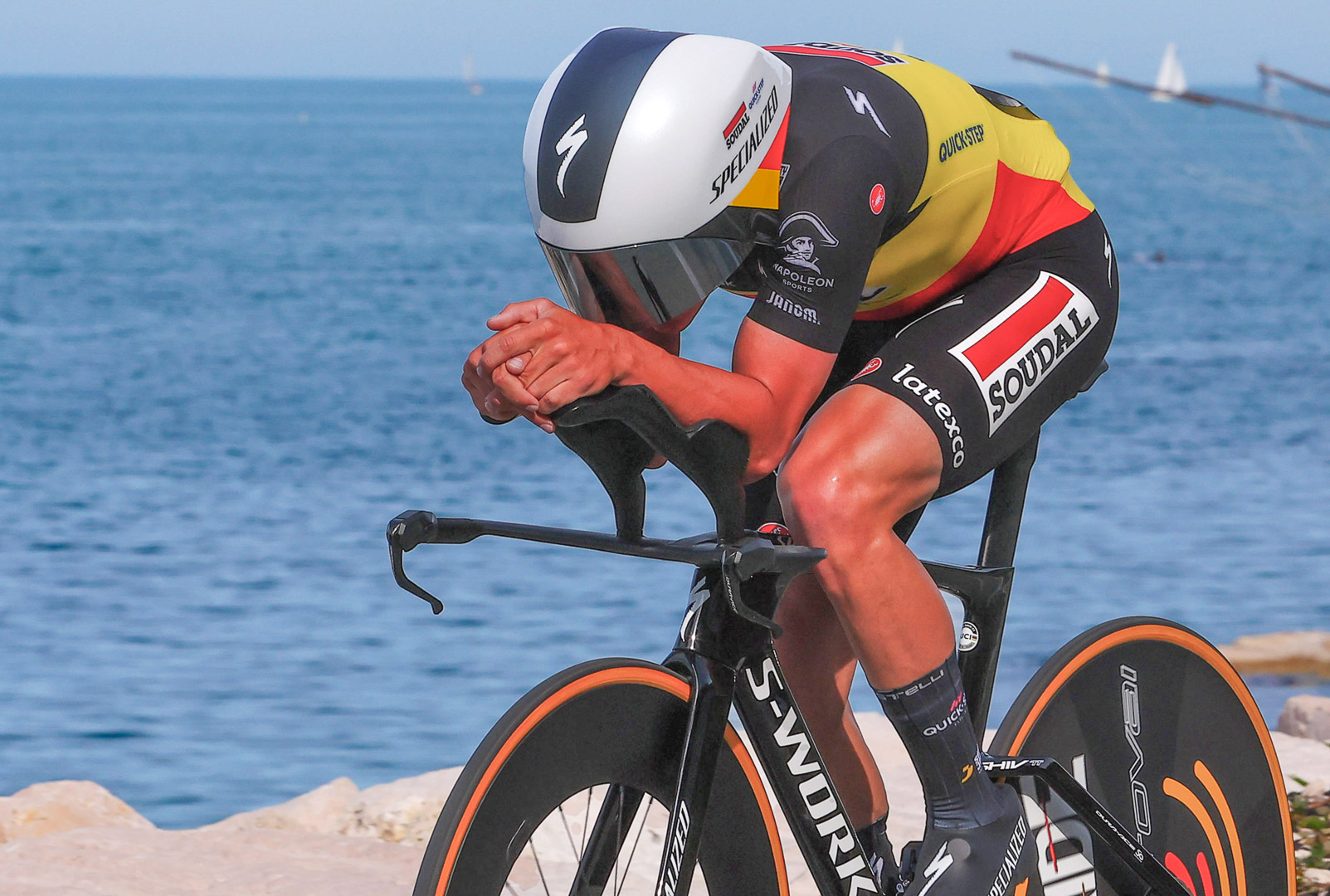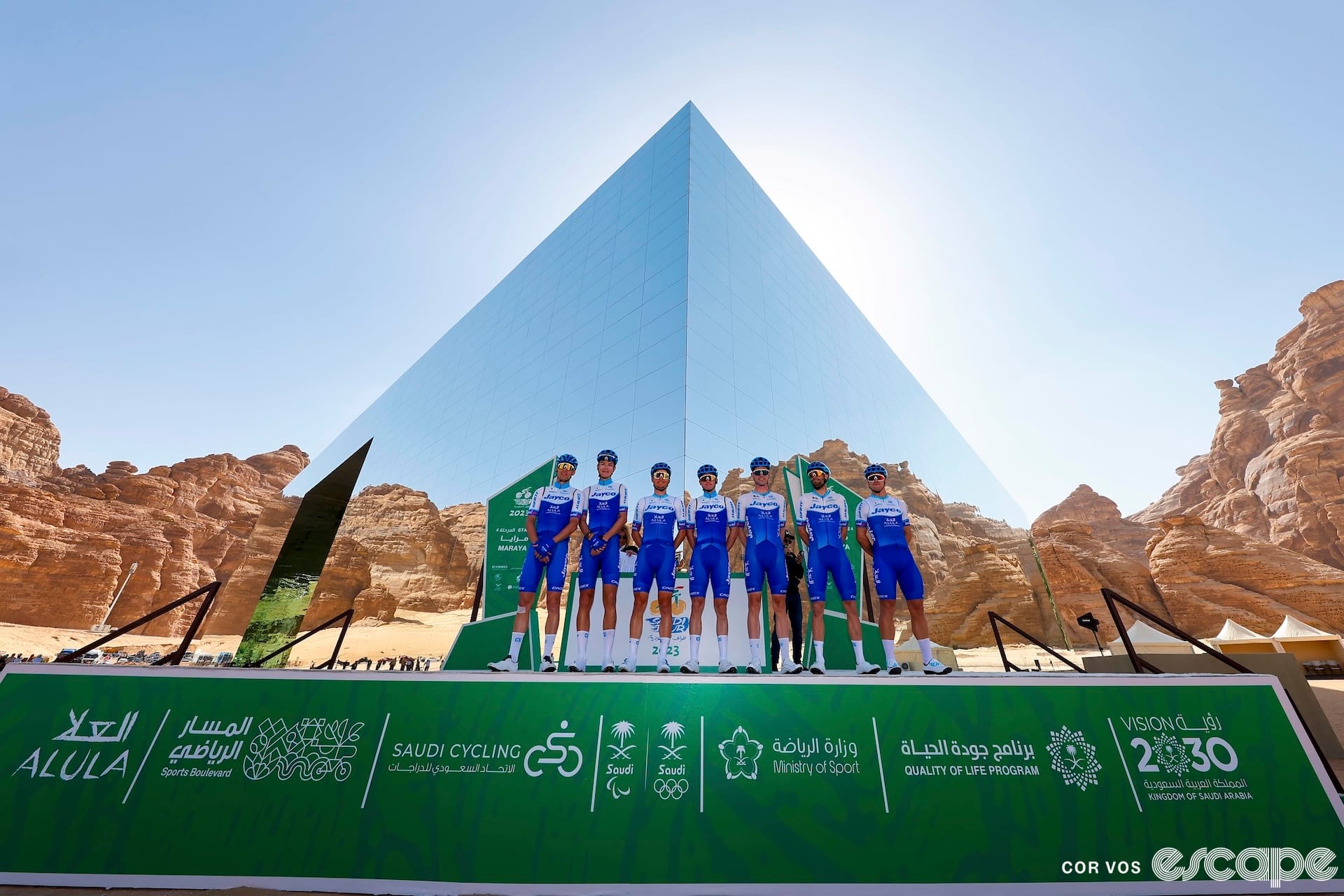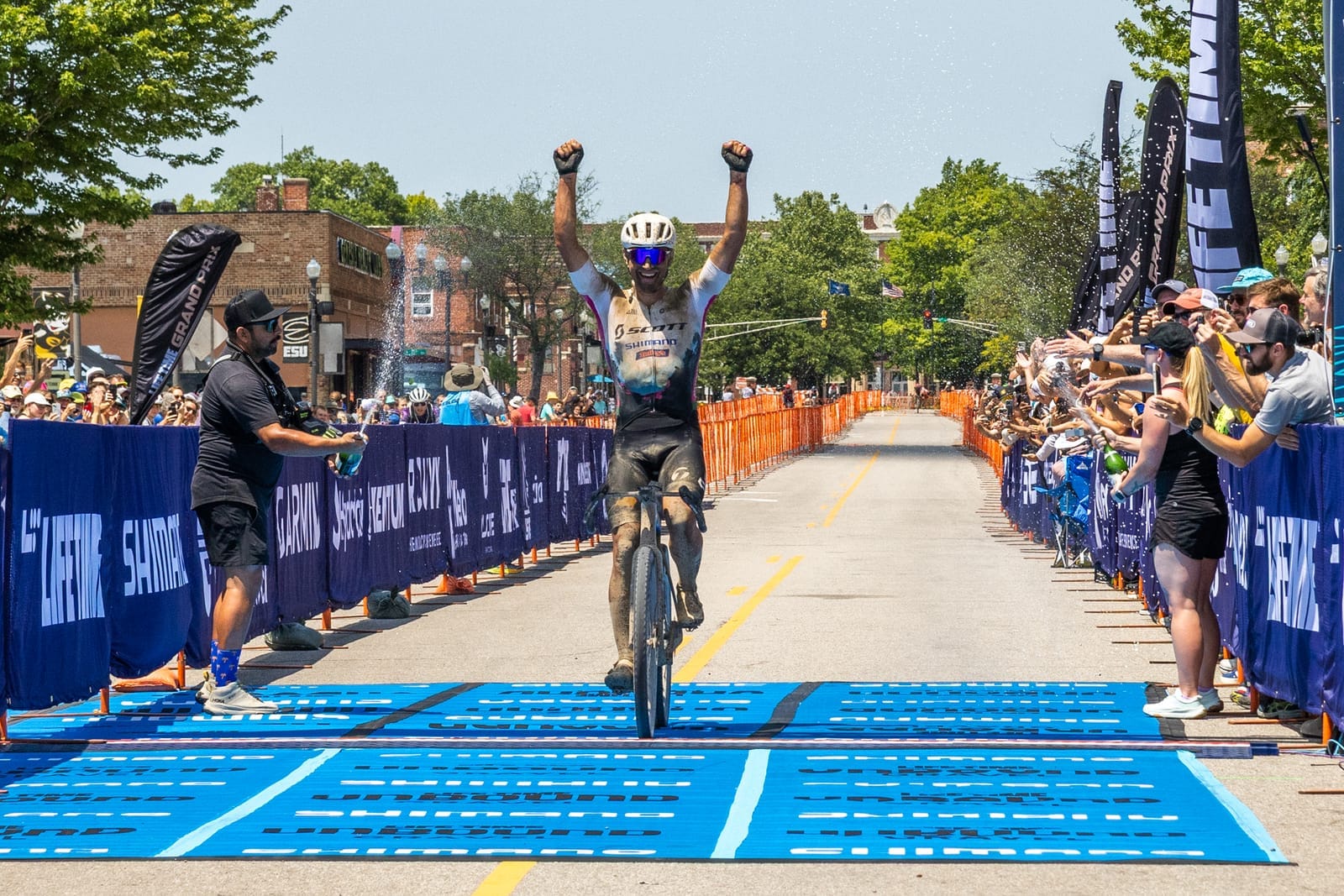When we talk about 'gifted riders', we typically mean gifted with natural talent, a high Vo2, a phenomenal power-to-weight ratio, a certain morphology, and great bike handling. Never have I considered someone's skin. But a report in Het Nieuwsblad and mentioned on The Cycling Podcast on Saturday suggests one of Remco Evenepoel's natural gifts includes his aerodynamic skin.
The suggestion of aero skin was greeted with an eye roll or two after the Giro d'Italia's opening stage, and we didn't think much more of it, until a chance email exchange with Soudal Quick-Step's clothing supplier, Castelli, which provides the answer to a question we didn't know we had asked.

Trawling through galleries following Remco's dominant stage 1 performance, we noticed the eventual stage winner was racing in the new Castelli skinsuit we had already seen the Belgian ITT champion wear this season, but hadn't got any details about yet.
Remco's suit stood out from the Body Paint 4.X Speed Suit Castelli typically offers. There's the trip strip rib-like fabric running across the back, seams in different locations, the short sleeves and comparatively shorter legs. Intrigued by the suit, I popped an email off to our Castelli contacts, expecting to be told this is a new suit that's still in development.
However, Steve Smith, Castelli's brand manager, explained that Remco's suit actually stems from the brand having to ditch everything it knew about what makes a skinsuit fast.
Castelli's development in this area stretches back through the brand's partnership with Team Sky/Ineos and perhaps drew most attention at the 2017 Tour de France Grand Depart when the in/famous vortex generators on Team Sky's skinsuit sleeves were outlawed by the UCI.
That setback forced Castelli to develop the Body Paint 4.X suit, and eventually specific suits and fabrics, optimised for the 64 km/h speeds the world record-breaking Italian team pursuit squad was achieving. Throughout those years, the brand almost always found that longer sleeves and legs tested faster. Some riders preferred shorter sleeves, but still, longer was faster. Not necessarily because longer sleeves are actually faster in themselves, but because the long arms tend to do a better job of holding the suit in position and free of wrinkles.
Castelli partnered with Soudal Quick-Step at the start of the 2022 season, and as per usual, the Italian brand brought the team's fastest time trialists to the wind tunnel. Cattaneo and Lampaert were first in ... new suit, long sleeves, relatively long legs, ~2% improvement/drop in CdA. All as expected, according to Castelli.
Then, in the brand's own words, "along came Remco," who, before the tests even started, was already telling the engineers, "I'll be faster with short sleeves."
Castelli stuck to what it knew, though, and tested the usual bag of tricks, but Remco tested slower than he did in his old team suit (with short sleeves), as promised.
Castelli tried a different long-sleeved suit, then added different aero base layers the like of which we see so many riders using this season, then a different fabric, and so on and so on. Still, Remco tested slower or, at best, just matched the old suit.
Basically, everything we thought we knew didn’t apply to Remco.
Castelli (and possibly also the laws of physics)
At that point, someone suggested they should listen to Remco and try his short-sleeved suggestion. Voila! First the team cut the sleeves at the elbows and found a "significant improvement." Mid bicep was faster again, and finally, cutting the sleeve off entirely, "just for fun", proved fastest of all.
Castelli then took the scissors and the same approach to the legs of Remco's suit. The knee-length Filippo Ganna style proved slowest for Remco, mid-length legs were faster, while shorter shorts à la Sean Yates were faster still. But again, cutting the shorts right down as far as possible tested fastest for Remco.
It seems a swimsuit might just be the most lucrative option for Remco, but sponsor commitments, and likely a UCI rule or two, mean the team settled on a shorter version of his road shorts and sleeves.
Seemingly it was around this time Specialized unveiled its new TT5 time trial helmet. According to Castelli, the new lid "significantly changes the airflow coming off the helmet", and forced a new suit design to re-optimise Remco's tailored suit. Hence the slightly different back we first spotted at the Belgian Time Trial Championships, then the Vuelta, and more recently this season at the Giro and other races.
The suit mystery solved, the only remaining question is why the 23-year-old differs so vastly to many other riders.
"The honest answer is we just don't know," Smith explained, before theorising it could be something to do with Remco's extreme arm angle, the sheltering effect from his extensions, the wake off his helmet in such an extreme position, or the relationship between the wake from the front of his position and his thighs.
Want my guess? It probably helps that Remco shaves his arms.
Whatever the exact reason, it seems Remco's natural god-gifted skin has a lower aero skin friction drag than the best fabrics man can source.
Finally, you hear that noise? That's the sound of every time trialist on the planet taking their best dressmaking scissors to their skinsuits.
Did we do a good job with this story?


